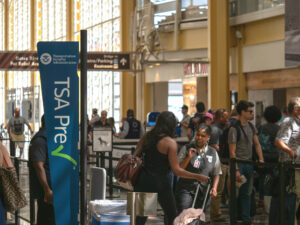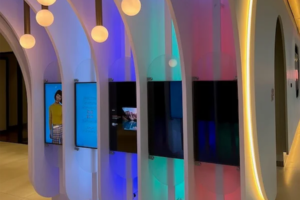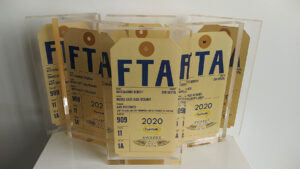Last edit by: philemer
Posts from 1/1/16 onward can be found here: http://www.flyertalk.com/forum/credit-card-programs/1739359-2016-onward-usa-emv-cards-availability-q-chip-pin-signature.html
EMV wikipost volunteers: kebosabi
What is EMV?
EMV is a defacto global standard of technology where there is a visible microchip on the front of the card. It looks like this:
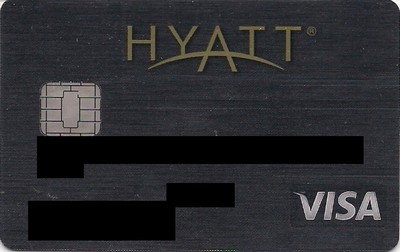
Who issues them?
See Google Docs spreadsheet in Post #1
SFOAMS also has created a list of excellent webpage that shows US EMV cards in a more interactive interface
Another site, which lets you narrow the search for an EMV card by various parameters, is http://www.spotterswiki.com/emv/index.php.
Several credit unions issue some form of Chip-and-PIN credit cards or prepaid cards. Prepaid EMV cards however are not recommended due to junk fees. USAA (currently restricted to members of military) used to offer Chip-and-PIN cards, but as late has backtracked to Chip-and-Signature priority.
Hey that's a cool Google Docs list! I know others that aren't on that list. How can I help by adding them to the list?
My bad for not putting this into the wiki sooner. Right now, the Google Docs is locked out of editing and only in "read-only" view because there were instances in the past where people would just delete the rows not thinking that it affects others viewing the list.
If you promise not to delete any rows and input all the pertinent info (annual fee, rewards, FTF, etc.), I can provide you with edit access. Just shoot me a PM to kebosabi with your gmail address and I'll provide you edit access.
Thanks for helping out!
As of October 2014, no USA-based card issuer offers Chip-and-PIN priority cards except for BMO Harris (Diners Club) and UN Federal Credit Union. Other major USA-based banks such as BofA, Chase, Citi, as well as others issue Chip-and-Signature cards which may work at many automated kiosks. However, bear in mind the word may is used above is a context where there is no absolute certainty of success for certain environments such as automated kiosks due to different natures of offline and online transactions. It is highly recommended to read Post #3 which lists real life FTer examples on how Chip-and-Signature worked and did not work at various transaction environments.
Can I upgrade it right now?
If it's listed on that Google Docs spreadsheet or SFOAMS' Silk page, wouldn't hurt to call/twitter them for a free upgrade. If you get the response you don't like, hang up, try again.
What is the difference between Chip-and-Signature and Chip-and-PIN?
You insert the chipped card into the slot. The physical contact terminal will read the EMV chip and the terminal will automatically read the preferred cardholder verification methods (called CVM) for that card.
Chip-and-Signature means that the terminal will printout a receipt for you to sign. This is the most prevalent authentication for most US issued EMV cards. Chip-and-Signature helps in a way that it will get through to face-to-face merchant transactions where you and the merchant do not speak the same language.
Chip-and-PIN means that the terminal will prompt you to input a PIN for authentication. Some credit union issued credit cards will have this CVM as secondary if Chip-and-Signature cannot be done. Chip-and-PIN is the more prevalent method of authentication used outside the US, especially in transaction environments where no human interaction is needed (i.e. automated gas pumps, toll roads, train kiosks, etc.).
The Google Docs spreadsheet will list which CVM are used in the EMV cards listed. Some cards can only do Chip-and-Signature. Other cards can do both Chip-and-Signature and Chip-and-PIN. And others might have a third option called No CVM (no authentication needed) which is reserved for low value transactions.
One chip can hold a lot more data, therefore it is capable of doing multiple verification methods. That's one of the great things about EMV over the mag-stripe which can hold very little data.
I want to know for sure what my EMV chip does. Is there anyway I can test out my own EMV card to see what the CVM list is?
alexmt has written up a nice step-by-step procedure on Post #3615.
If most of the EMV cards in the US is the Chip-and-Signature type, doesn't that mean it's still useless abroad?
Depends if you see it as glass half empty or glass half full. See Post #3 for further details on how Chip-and-Signature has worked both successfully and unsuccessfully depending on the merchant transaction environment and use your best judgment whether which one is right for you.
Are there any places in the US that are accepting transactions via the EMV chip?
tmiw has created a dedicated Google maps webpage to show where EMV has been proven to work here: http://emvacceptedhere.com/ Per his Post #4240, feel free to add any places with active EMV terminals if you come across one.
As of 2014/05, the EMV terminals in most Walmarts and Sam's Clubs are being turned on. Hence, the best place to try them out would be your local Walmart or Sam's Club. For other merchants, it's slowly being phased in.
I hope people will post them in the Post your receipt of your 1st EMV based transaction in the US thread. cvarming has shown us an EMV transaction receipt from Brooklyn, NY in Post #2380. I myself had my first EMV based (Chip-and-Signature) transaction in two stores in the Los Angeles area, as shown in detail in Post #2705 (courtesy of WhatWhatTech for pointing these two stores out)
I don't want a chip in my card. I heard horror stories all over the media saying hackers can steal my credit card info from a mile away.
There are two types of chips. One is contactless and the other is contact. Cards can be either one or the other, or both.
In the Google Docs spreadsheet, the cards that are capable of contactless payments are listed seperately under the "RFID or NFC contactless chip" column. If it says yes, then that means it has the ability to do contactless payments. If it says no, it doesn't have that feature.
The one that the media has overhyped about hackers "stealing your information wirelessly" was the contactless type like this:
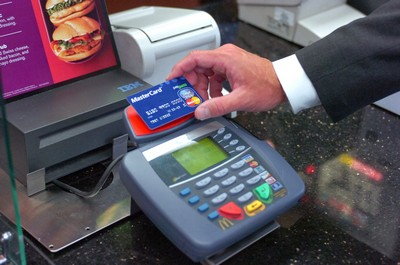
You are worried about this happening, right?
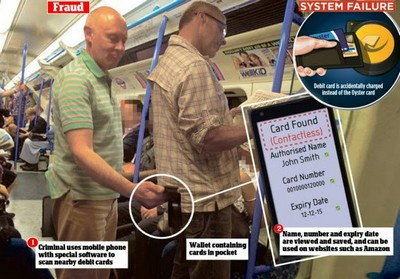
You don't have to worry. EMV is a chip standard that can have both contact and contactless interfaces. With the traditional contact interface, this means you actually have to physically insert the chip into a POS terminal for it to be authorized, like this:
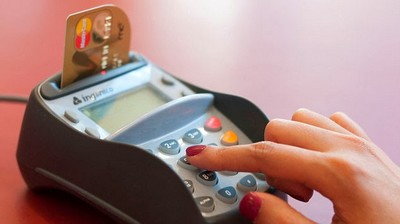
With the contact interface, nothing is wireless. No data is sent out in a stand-alone contact type EMV chip. With the EMV contactless interface, data is sent wirelessly.
Furthermore, contactless chip cards are required to show a symbol (looks like Wi-Fi symbol) somewhere on the card that to denote it's capability as a contactless card. For example, here's an example of a Discover Card with contactless capability (in which Discover calls "Discover ZIP") showing the contactless symbol on the back of the card:
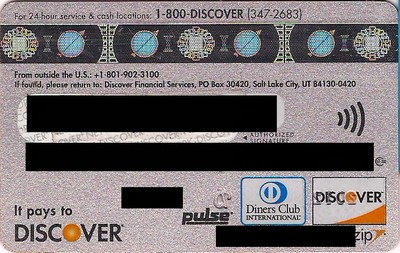
Don't believe everything that the media says. Besides, millions of people all over the world from London to Singapore, uses contactless payments daily in extremely crowded subways and mass transit with nary any problems. There are multiple layers of encrypted securities and keys that are needed to break the code.
Frankly, giving your physical card to a waiter/waitress who takes the card out of your view is much more susceptible to fraud than contactless payments.
Why should I care?
If you are an international traveler, you will want this because majority of the world has or in the process of converting to this payment format.
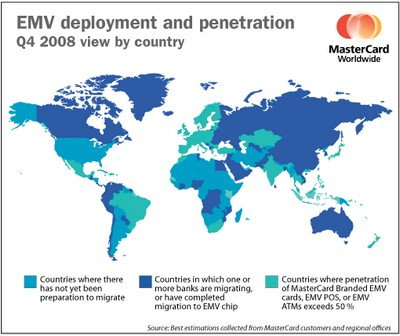
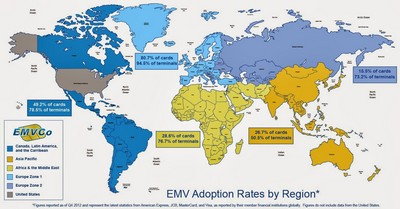
In fact, in 2012, even North Korea moved to the EMV format, leaving the US as one of the countries in the world that hasn't done so.
In addition, VISA, MC, AMEX, and Discover have all agreed to incentivize the USA shifting to EMV payments by 2015 by shifting liability for fraudulent transactions to merchants if they do not have EMV equipment and the cardholder has an EMV card. So if you travel internationally or would like to get one before the others, you might be interested in getting one.
BS! I had no problems using my card in [insert whereever country], [insert whatever point in time]
If you stick to the tourist path where they have lots of visitors from the US, you should have no problems using your mag-stripe only card in hotels and restaurants, at least for now. But as things can change as things go forward.
However, consider that once you start taking the off-beaten path, go to non-touristy places where they are not familiar with mag-stripes, rent a car and use toll roads, fill up gas, or try to buy train tickets you might end up into a trouble of the machine not recognizing your card because it lacks the chip. Furthermore, a lot of toll roads, gas pumps, and automated ticket machines lack any human assistance to help you when you need it the most.
But [insert credit card company] told me all merchants that display their logo must accept them! All I have to do is report them for violating their agreements, right?
There are several factors against this.
1. You can only speak English. The merchant representative, most likely a part-time clerk earning minimum wage, speaks in a different language, let's say French. If you have no French language skills, how are you going to get your point across? Are you going to whip out your cell phone at exorbitant int'l roaming charges and hope the customer service is going to translate it for you on the spot? Or maybe you might actually know French. But how about Swahili, Farsi, Balinese, or the multiple languages in mainland China?
2. Just like US, the rest of the world's businesses uses part-time minimum wage workers as cashiers to cut down on labor costs. Most of their SOP training manuals are written by MBA types to not to do anything they are not familiar with. Do not expect them to understand the intricate details of credit card mumbo jumbo. You don't expect Taco Bell employees to understand the minute details of Discover-JCB-Union Pay agreements, right? Same thing the other way around: be respectful as a guest in their country, prepare in advance in their ways, avoid being an "ugly American" stereotype.
3. You are a guest in their country. You are a minority. If 99.9% of their country's people and other tourists from around the world uses EMV, do you really think they are going to accomodate the 0.1% of American tourists who only have mag-stripes credit cards?
4. Again, you are a guest in their country. How would you, as an American standing in line, react if a Chinese tourist was clogging up the lines at a local Taco Bell because the clerk doesn't understand the Discover-Union Pay agreement and has trouble communicating between Mandarin spoken by the tourist and English spoken by the Taco Bell clerk? Same way the other way around. You do not want to clog up the lines for everyone. The less hassle, the better.
5. VISA and MC make tons of money from merchants in that country. Say SNCF French Rail. It's a billion dollar company in France. Do you think VISA is going to pull the plug of their relationship with SNCF because SNCF refuses to do mag-stripe processing at their unmanned train station kiosk? Of course not. Be realistic.
6. And lastly, if you're up against an unstaffed toll kiosk, gas pump or train ticket machine, are you going to yell curses at the machine?
But I want my credit card to be able to be used in the US too!
No worries. They have not gotten rid of the mag-stripe on the back of the card for backward compatibility reasons, just like we still have embossed numbers on our cards for backwards compatibility to using those old carbon copy imprinters.
[insert own Hyatt card image front and back together with red arrows pointing to all the backward compatibility features]
You use the chip on the front of the card abroad (for now), and the mag-stripe just like any other card for the US. Basically, you're increasing your credit card's acceptance rate by getting a card that both via the chip and the mag-stripe. You're getting a better deal for free.
And when 2015 comes along and US switches to EMV, you'll be way ahead of everyone else too!
So why did the rest of the world and the US moved/moving toward EMV?
Primarily, due to fraud concerns. You see, the mag-stripe has been with us since the 1950s. It may have been the most high tech thing back in the day, but with the technology that is available today, any shmo can pick up a $100 USB magnetic card skimming device off of eBay and get your credit card info.
And unlike skimming off contactless cards which actually need the person to have l33t programming skills, skimming off a magnetic stripe has become so ubiquitous that nary a day goes about skimming fraud going on somewhere in America, from gas pumps, Michael's stores (2011), Target breaches (2013), restaurant waiters/waitresses, to even McDonald's drive thrus.
https://www.google.com/search?q=skimming+fraud
These type of fraud used to be prevalent in Europe. But once they started switching over to EMV starting over 2 decades ago, this type of fraud went elsewhere. It went over to Asia, Canada and Mexico, Latin America, etc. etc. until they too began implementing EMV to combat skimming fraud. The US is practically the only country left that hasn't done so, therefore all the fraud that used to take place elsewhere is now happening here.
But EMV is old and it's not fool proof. Shouldn't we just skip over it and do something new instead?
Yes, EMV is old. It was developed in the 1990s and its smart card payment predecessor was first introduced in France. But as of today, it has become the defacto global standard of payments.
But then, what else is there? There is no other de facto global standard of payments alternative. For example, if we decide to skip over it and do something new, hypothetically like DNA matching technology, it still means US int'l travelers will continue to have problems abroad with useless plastic acceptance because no other country is using this DNA matching technology except the US.
Besides, nothing is fool proof. You can say that the bank vault isn't fool proof because you can crack it open if enough C4 is used. But your average low-life scumbag isn't likely to get military grade C4 easily either. But the bank vault does make it harder to get the bank's money over say a petty cash box. That's the point here. EMV is akin to a security tight bank vault, the old mag-stripe is akin to a petty cash box lying around inside the drawer.
I'm a business owner and I don't think EMV is going to take off. I'm not going to spend extra hundreds of dollars to upgrade my credit card machine. Convince me other wise why I should.
I can understand the added extra cost to your business once this switchover takes place. But before even saying that, look at your existing POS terminal. Does it have a slot somewhere to insert a card?
Most likely, if you had replaced your POS terminal within the past five years, you already have an EMV capable terminal. EMV is basically just not turned on yet from the processor and acquirer side.
If you have an EMV capable terminal, then a best bet would be to contact your acquirer to have the EMV feature turned on. You did your end of the deal already by having an EMV capable terminal, it is now the acquirers' responsibility to turn it on in accordance to the EMV switchover mandate.
And if you don't, you are going to replace your POS terminal anyway from common wear and tear. It isn't a hard switch-over. You can continue to use your POS terminal until it dies out because EMV cardholders will still have the mag-stripe on the back. And by the time your non-EMV capable POS terminal is up for replacement the market will be full with these newer POS terminals that can accept the mag-stripe, EMV, as well as contactless payments.
In addition, you may also want to check with your acquirer or processor about EMV capable terminals. Some of them are willing to replace your terminal for free in preparation for the US EMV switchover. Call and ask for details.
But what's in it for me? I'm the one that has to pay for the upgrade.
All the major card networks have given incentives for merchants for the upcoming EMV switchover.
If 75% or more of your credit card transactions are done on an EMV contact and contactless terminal, they are going to waive your annual PCI-DSS fees, which usually costs you around $5.00-$19.95/month per terminal. The overall long term cost savings of those compliance fees will be larger than the cost of an one time upgrade for the terminal.
The downside is that once EMV switchover happens and if you do not have a POS terminal that is able to accept EMV, the fraud liability shifts over to the merchant.
I own several fast food franchises. If I upgrade my POS terminals at all of my restaurants, it's going to cost me thousands, if not millions. I don't think anyone is going to use a fake credit card to buy $5 burgers. And if they do, wouldn't it be cheaper for me to eat the fraud cost?
Remember also that fraud isn't just committed by dishonest customers using fraudulent cards. Fraud can also happen with dishonest employees skimming off credit card data from the mag-stripe as in the case of a teenage McDonald's drive thru employee skimming off $13,000 of customers' credit cards in Olympia, WA. Consider the public relations fall out that your business may have if this happens (i.e. the big Target breach of 2013, where someone used a mag stripe card to load malware INTO Target's system). Is it worth risking to take such a huge PR disaster?
EMV wikipost volunteers: kebosabi
What is EMV?
EMV is a defacto global standard of technology where there is a visible microchip on the front of the card. It looks like this:

Who issues them?
See Google Docs spreadsheet in Post #1
SFOAMS also has created a list of excellent webpage that shows US EMV cards in a more interactive interface
Another site, which lets you narrow the search for an EMV card by various parameters, is http://www.spotterswiki.com/emv/index.php.
Several credit unions issue some form of Chip-and-PIN credit cards or prepaid cards. Prepaid EMV cards however are not recommended due to junk fees. USAA (currently restricted to members of military) used to offer Chip-and-PIN cards, but as late has backtracked to Chip-and-Signature priority.
Hey that's a cool Google Docs list! I know others that aren't on that list. How can I help by adding them to the list?
My bad for not putting this into the wiki sooner. Right now, the Google Docs is locked out of editing and only in "read-only" view because there were instances in the past where people would just delete the rows not thinking that it affects others viewing the list.
If you promise not to delete any rows and input all the pertinent info (annual fee, rewards, FTF, etc.), I can provide you with edit access. Just shoot me a PM to kebosabi with your gmail address and I'll provide you edit access.
Thanks for helping out!
As of October 2014, no USA-based card issuer offers Chip-and-PIN priority cards except for BMO Harris (Diners Club) and UN Federal Credit Union. Other major USA-based banks such as BofA, Chase, Citi, as well as others issue Chip-and-Signature cards which may work at many automated kiosks. However, bear in mind the word may is used above is a context where there is no absolute certainty of success for certain environments such as automated kiosks due to different natures of offline and online transactions. It is highly recommended to read Post #3 which lists real life FTer examples on how Chip-and-Signature worked and did not work at various transaction environments.
Can I upgrade it right now?
If it's listed on that Google Docs spreadsheet or SFOAMS' Silk page, wouldn't hurt to call/twitter them for a free upgrade. If you get the response you don't like, hang up, try again.
What is the difference between Chip-and-Signature and Chip-and-PIN?
You insert the chipped card into the slot. The physical contact terminal will read the EMV chip and the terminal will automatically read the preferred cardholder verification methods (called CVM) for that card.
Chip-and-Signature means that the terminal will printout a receipt for you to sign. This is the most prevalent authentication for most US issued EMV cards. Chip-and-Signature helps in a way that it will get through to face-to-face merchant transactions where you and the merchant do not speak the same language.
Chip-and-PIN means that the terminal will prompt you to input a PIN for authentication. Some credit union issued credit cards will have this CVM as secondary if Chip-and-Signature cannot be done. Chip-and-PIN is the more prevalent method of authentication used outside the US, especially in transaction environments where no human interaction is needed (i.e. automated gas pumps, toll roads, train kiosks, etc.).
The Google Docs spreadsheet will list which CVM are used in the EMV cards listed. Some cards can only do Chip-and-Signature. Other cards can do both Chip-and-Signature and Chip-and-PIN. And others might have a third option called No CVM (no authentication needed) which is reserved for low value transactions.
One chip can hold a lot more data, therefore it is capable of doing multiple verification methods. That's one of the great things about EMV over the mag-stripe which can hold very little data.
I want to know for sure what my EMV chip does. Is there anyway I can test out my own EMV card to see what the CVM list is?
alexmt has written up a nice step-by-step procedure on Post #3615.
If most of the EMV cards in the US is the Chip-and-Signature type, doesn't that mean it's still useless abroad?
Depends if you see it as glass half empty or glass half full. See Post #3 for further details on how Chip-and-Signature has worked both successfully and unsuccessfully depending on the merchant transaction environment and use your best judgment whether which one is right for you.
Are there any places in the US that are accepting transactions via the EMV chip?
tmiw has created a dedicated Google maps webpage to show where EMV has been proven to work here: http://emvacceptedhere.com/ Per his Post #4240, feel free to add any places with active EMV terminals if you come across one.
As of 2014/05, the EMV terminals in most Walmarts and Sam's Clubs are being turned on. Hence, the best place to try them out would be your local Walmart or Sam's Club. For other merchants, it's slowly being phased in.
I hope people will post them in the Post your receipt of your 1st EMV based transaction in the US thread. cvarming has shown us an EMV transaction receipt from Brooklyn, NY in Post #2380. I myself had my first EMV based (Chip-and-Signature) transaction in two stores in the Los Angeles area, as shown in detail in Post #2705 (courtesy of WhatWhatTech for pointing these two stores out)
I don't want a chip in my card. I heard horror stories all over the media saying hackers can steal my credit card info from a mile away.
There are two types of chips. One is contactless and the other is contact. Cards can be either one or the other, or both.
In the Google Docs spreadsheet, the cards that are capable of contactless payments are listed seperately under the "RFID or NFC contactless chip" column. If it says yes, then that means it has the ability to do contactless payments. If it says no, it doesn't have that feature.
The one that the media has overhyped about hackers "stealing your information wirelessly" was the contactless type like this:

You are worried about this happening, right?

You don't have to worry. EMV is a chip standard that can have both contact and contactless interfaces. With the traditional contact interface, this means you actually have to physically insert the chip into a POS terminal for it to be authorized, like this:

With the contact interface, nothing is wireless. No data is sent out in a stand-alone contact type EMV chip. With the EMV contactless interface, data is sent wirelessly.
Furthermore, contactless chip cards are required to show a symbol (looks like Wi-Fi symbol) somewhere on the card that to denote it's capability as a contactless card. For example, here's an example of a Discover Card with contactless capability (in which Discover calls "Discover ZIP") showing the contactless symbol on the back of the card:

Don't believe everything that the media says. Besides, millions of people all over the world from London to Singapore, uses contactless payments daily in extremely crowded subways and mass transit with nary any problems. There are multiple layers of encrypted securities and keys that are needed to break the code.
Frankly, giving your physical card to a waiter/waitress who takes the card out of your view is much more susceptible to fraud than contactless payments.
Why should I care?
If you are an international traveler, you will want this because majority of the world has or in the process of converting to this payment format.


In fact, in 2012, even North Korea moved to the EMV format, leaving the US as one of the countries in the world that hasn't done so.
In addition, VISA, MC, AMEX, and Discover have all agreed to incentivize the USA shifting to EMV payments by 2015 by shifting liability for fraudulent transactions to merchants if they do not have EMV equipment and the cardholder has an EMV card. So if you travel internationally or would like to get one before the others, you might be interested in getting one.
BS! I had no problems using my card in [insert whereever country], [insert whatever point in time]
If you stick to the tourist path where they have lots of visitors from the US, you should have no problems using your mag-stripe only card in hotels and restaurants, at least for now. But as things can change as things go forward.
However, consider that once you start taking the off-beaten path, go to non-touristy places where they are not familiar with mag-stripes, rent a car and use toll roads, fill up gas, or try to buy train tickets you might end up into a trouble of the machine not recognizing your card because it lacks the chip. Furthermore, a lot of toll roads, gas pumps, and automated ticket machines lack any human assistance to help you when you need it the most.
But [insert credit card company] told me all merchants that display their logo must accept them! All I have to do is report them for violating their agreements, right?
There are several factors against this.
1. You can only speak English. The merchant representative, most likely a part-time clerk earning minimum wage, speaks in a different language, let's say French. If you have no French language skills, how are you going to get your point across? Are you going to whip out your cell phone at exorbitant int'l roaming charges and hope the customer service is going to translate it for you on the spot? Or maybe you might actually know French. But how about Swahili, Farsi, Balinese, or the multiple languages in mainland China?
2. Just like US, the rest of the world's businesses uses part-time minimum wage workers as cashiers to cut down on labor costs. Most of their SOP training manuals are written by MBA types to not to do anything they are not familiar with. Do not expect them to understand the intricate details of credit card mumbo jumbo. You don't expect Taco Bell employees to understand the minute details of Discover-JCB-Union Pay agreements, right? Same thing the other way around: be respectful as a guest in their country, prepare in advance in their ways, avoid being an "ugly American" stereotype.
3. You are a guest in their country. You are a minority. If 99.9% of their country's people and other tourists from around the world uses EMV, do you really think they are going to accomodate the 0.1% of American tourists who only have mag-stripes credit cards?
4. Again, you are a guest in their country. How would you, as an American standing in line, react if a Chinese tourist was clogging up the lines at a local Taco Bell because the clerk doesn't understand the Discover-Union Pay agreement and has trouble communicating between Mandarin spoken by the tourist and English spoken by the Taco Bell clerk? Same way the other way around. You do not want to clog up the lines for everyone. The less hassle, the better.
5. VISA and MC make tons of money from merchants in that country. Say SNCF French Rail. It's a billion dollar company in France. Do you think VISA is going to pull the plug of their relationship with SNCF because SNCF refuses to do mag-stripe processing at their unmanned train station kiosk? Of course not. Be realistic.
6. And lastly, if you're up against an unstaffed toll kiosk, gas pump or train ticket machine, are you going to yell curses at the machine?
But I want my credit card to be able to be used in the US too!
No worries. They have not gotten rid of the mag-stripe on the back of the card for backward compatibility reasons, just like we still have embossed numbers on our cards for backwards compatibility to using those old carbon copy imprinters.
[insert own Hyatt card image front and back together with red arrows pointing to all the backward compatibility features]
You use the chip on the front of the card abroad (for now), and the mag-stripe just like any other card for the US. Basically, you're increasing your credit card's acceptance rate by getting a card that both via the chip and the mag-stripe. You're getting a better deal for free.
And when 2015 comes along and US switches to EMV, you'll be way ahead of everyone else too!
So why did the rest of the world and the US moved/moving toward EMV?
Primarily, due to fraud concerns. You see, the mag-stripe has been with us since the 1950s. It may have been the most high tech thing back in the day, but with the technology that is available today, any shmo can pick up a $100 USB magnetic card skimming device off of eBay and get your credit card info.
And unlike skimming off contactless cards which actually need the person to have l33t programming skills, skimming off a magnetic stripe has become so ubiquitous that nary a day goes about skimming fraud going on somewhere in America, from gas pumps, Michael's stores (2011), Target breaches (2013), restaurant waiters/waitresses, to even McDonald's drive thrus.
https://www.google.com/search?q=skimming+fraud
These type of fraud used to be prevalent in Europe. But once they started switching over to EMV starting over 2 decades ago, this type of fraud went elsewhere. It went over to Asia, Canada and Mexico, Latin America, etc. etc. until they too began implementing EMV to combat skimming fraud. The US is practically the only country left that hasn't done so, therefore all the fraud that used to take place elsewhere is now happening here.
But EMV is old and it's not fool proof. Shouldn't we just skip over it and do something new instead?
Yes, EMV is old. It was developed in the 1990s and its smart card payment predecessor was first introduced in France. But as of today, it has become the defacto global standard of payments.
But then, what else is there? There is no other de facto global standard of payments alternative. For example, if we decide to skip over it and do something new, hypothetically like DNA matching technology, it still means US int'l travelers will continue to have problems abroad with useless plastic acceptance because no other country is using this DNA matching technology except the US.
Besides, nothing is fool proof. You can say that the bank vault isn't fool proof because you can crack it open if enough C4 is used. But your average low-life scumbag isn't likely to get military grade C4 easily either. But the bank vault does make it harder to get the bank's money over say a petty cash box. That's the point here. EMV is akin to a security tight bank vault, the old mag-stripe is akin to a petty cash box lying around inside the drawer.
I'm a business owner and I don't think EMV is going to take off. I'm not going to spend extra hundreds of dollars to upgrade my credit card machine. Convince me other wise why I should.
I can understand the added extra cost to your business once this switchover takes place. But before even saying that, look at your existing POS terminal. Does it have a slot somewhere to insert a card?
Most likely, if you had replaced your POS terminal within the past five years, you already have an EMV capable terminal. EMV is basically just not turned on yet from the processor and acquirer side.
If you have an EMV capable terminal, then a best bet would be to contact your acquirer to have the EMV feature turned on. You did your end of the deal already by having an EMV capable terminal, it is now the acquirers' responsibility to turn it on in accordance to the EMV switchover mandate.
And if you don't, you are going to replace your POS terminal anyway from common wear and tear. It isn't a hard switch-over. You can continue to use your POS terminal until it dies out because EMV cardholders will still have the mag-stripe on the back. And by the time your non-EMV capable POS terminal is up for replacement the market will be full with these newer POS terminals that can accept the mag-stripe, EMV, as well as contactless payments.
In addition, you may also want to check with your acquirer or processor about EMV capable terminals. Some of them are willing to replace your terminal for free in preparation for the US EMV switchover. Call and ask for details.
But what's in it for me? I'm the one that has to pay for the upgrade.
All the major card networks have given incentives for merchants for the upcoming EMV switchover.
If 75% or more of your credit card transactions are done on an EMV contact and contactless terminal, they are going to waive your annual PCI-DSS fees, which usually costs you around $5.00-$19.95/month per terminal. The overall long term cost savings of those compliance fees will be larger than the cost of an one time upgrade for the terminal.
The downside is that once EMV switchover happens and if you do not have a POS terminal that is able to accept EMV, the fraud liability shifts over to the merchant.
I own several fast food franchises. If I upgrade my POS terminals at all of my restaurants, it's going to cost me thousands, if not millions. I don't think anyone is going to use a fake credit card to buy $5 burgers. And if they do, wouldn't it be cheaper for me to eat the fraud cost?
Remember also that fraud isn't just committed by dishonest customers using fraudulent cards. Fraud can also happen with dishonest employees skimming off credit card data from the mag-stripe as in the case of a teenage McDonald's drive thru employee skimming off $13,000 of customers' credit cards in Olympia, WA. Consider the public relations fall out that your business may have if this happens (i.e. the big Target breach of 2013, where someone used a mag stripe card to load malware INTO Target's system). Is it worth risking to take such a huge PR disaster?
USA EMV cards: Availability, Q&A (Chip & PIN -or- Chip & Signature) [2012-2015]
#4351
Join Date: Nov 2012
Posts: 3,537
Since when does US law apply to Europe? He was pretty clear he was referring to cards in Europe. He's still, mostly, wrong. For a period banks were arguing that the PIN was de facto evidence the cardholder was responsible, but the laws were updated (at least in Britain) to stop that behaviour.
#4352
Join Date: Jul 2009
Location: KWI
Programs: AA EXP
Posts: 806
Since when does US law apply to Europe? He was pretty clear he was referring to cards in Europe. He's still, mostly, wrong. For a period banks were arguing that the PIN was de facto evidence the cardholder was responsible, but the laws were updated (at least in Britain) to stop that behaviour.
Last edited by LoneTree; May 18, 2014 at 10:30 pm
#4353
Join Date: Nov 2012
Posts: 3,537

We need more chip and PIN cards in the US and more dual-interface cards. Especially now that Transport for London is going to start allowing contactless bank cards - no reason for tourists to have to pay £5 for Oyster cards if they have dual-interface bank cards...
#4354
FlyerTalk Evangelist
Join Date: Dec 2009
Location: HaMerkaz/Exit 145
Programs: UA, LY, BA, AA
Posts: 13,167
Nothing is 100 percent?
My mag stripe credit cards have 100 percent acceptability in the USA. Even if the mag stripe doesn't work, the merchant will call to get it authorized.
Indeed when the mag stripe terminals don't work, merchants will wipe out the old fashion card swiped with split carbons. I've had at least one of those in the past 12 months.
My mag stripe credit cards have 100 percent acceptability in the USA. Even if the mag stripe doesn't work, the merchant will call to get it authorized.
Indeed when the mag stripe terminals don't work, merchants will wipe out the old fashion card swiped with split carbons. I've had at least one of those in the past 12 months.
My British Airways Chase Visa with chip and signature did not work in Germany. I was fortunate to have enough Euros to pay the bill.

You think chip and signature will work as kiosks that dispense train tix or gasoline?
#4355
Join Date: Nov 2012
Posts: 3,537
Germany isn't so great in general when it comes to credit cards 
There are reports in the thread of C&S working in Europe at unattended kiosks with no verification method, so yes, they can work. I have succeeded by using my cash advance PIN on a "pure" C&S card. (With the exception perhaps of the Citi Visa Signature AA card, I don't think there's any "pure" C&S card.)

There are reports in the thread of C&S working in Europe at unattended kiosks with no verification method, so yes, they can work. I have succeeded by using my cash advance PIN on a "pure" C&S card. (With the exception perhaps of the Citi Visa Signature AA card, I don't think there's any "pure" C&S card.)
Now, as for Germany - exactly. It may have nothing to do with PIN verification. They may just not take major credit cards, that's painfully common in Germany.
#4356
FlyerTalk Evangelist
Join Date: Dec 2009
Location: HaMerkaz/Exit 145
Programs: UA, LY, BA, AA
Posts: 13,167
Plenty of "pure" chip and signature cards (that is to say, PIN isn't in the CVM list except for ATM use) abound. That said, it seems sometimes the CVM list doesn't get parsed correctly and online PIN verification is used even though the CVM list says it's only meant for unattended cash. However, I sometimes wonder if in some of these situations the PIN prompt is a misconfiguration and it doesn't get verified at all - any PIN would work?
As for any PIN working, I've tried with 2 different cards specifically random PINs, followed by 0000, followed by 1234. Only the cash advance PIN worked.
#4357
Join Date: Jul 2007
Posts: 1,762
Yes indeed; we've been all through this in the past 290 pages time and time again. Resistance is clearly futuile. It is clear, as it stands today, the USA is moving in the direction of making the standard chip and signature for domestic use with pin capabilities at overseas off line kiosks. It doesn't matter if the logic of the acquirers is sound or not, they seem pretty adamant that is what they want. There may be a few acquirers that move in the direction of pure chip and pin the operative word being may. So far, other than USAA and UNFCU, nobody has seemed interested (and if those guys are out there alonr, how long will they continue to offer "pure" so to speak chip and pin cards).
In theory, it shouldn't matter. Now peole are arguing that therre will be merchants who refuse to take any card not verified by a pin. That is unfortunate but that is the job of the acqruirers, if the direction they wish to go in is c&s preferred to change those attitudes.
While I enjoy reading everybody's opinion (and I do) and sort of try at times to be a voice of reason, at this point in time, there's little that one can add to the discussion. I don't think the vast vast majority of Americans really care and I would wager my usual nickel if they were polled, the majority would probably want what is fastest and neatest which is probably signature verification. The people here? Well they tend to use credit cards much more for more things and of course they probably are much more likely to travel than the average person so it might be a bit skewed here.
At least that's my read of the situation as it exists today. It has nothing to do with what I want or expect. If it were up to me, I would probably want chip and pin for the slightly more security against card is present fraud it provides. But as I said, if I can have the assurance that for the most part my credit cards will work (and yes, nothing is 100% but 99.5% will do), I will be a happy camper.
In all due respect to everybody.
In theory, it shouldn't matter. Now peole are arguing that therre will be merchants who refuse to take any card not verified by a pin. That is unfortunate but that is the job of the acqruirers, if the direction they wish to go in is c&s preferred to change those attitudes.
While I enjoy reading everybody's opinion (and I do) and sort of try at times to be a voice of reason, at this point in time, there's little that one can add to the discussion. I don't think the vast vast majority of Americans really care and I would wager my usual nickel if they were polled, the majority would probably want what is fastest and neatest which is probably signature verification. The people here? Well they tend to use credit cards much more for more things and of course they probably are much more likely to travel than the average person so it might be a bit skewed here.
At least that's my read of the situation as it exists today. It has nothing to do with what I want or expect. If it were up to me, I would probably want chip and pin for the slightly more security against card is present fraud it provides. But as I said, if I can have the assurance that for the most part my credit cards will work (and yes, nothing is 100% but 99.5% will do), I will be a happy camper.
In all due respect to everybody.
#4358
Join Date: Nov 2012
Posts: 3,537
I'm sure there are some credit cards that are pure C&S. But after checking a number of credit cards with CardPeek that run the gamut of networks (Visa, MC, Amex) and issuing large BANKS + Amex (BoA, Citi, Chase, etc.) all but one do include online PIN as one of the verification methods.
As for any PIN working, I've tried with 2 different cards specifically random PINs, followed by 0000, followed by 1234. Only the cash advance PIN worked.
As for any PIN working, I've tried with 2 different cards specifically random PINs, followed by 0000, followed by 1234. Only the cash advance PIN worked.
#4359
FlyerTalk Evangelist
Join Date: Jan 2014
Location: San Diego, CA
Programs: GE, Marriott Platinum
Posts: 15,507
Yes indeed; we've been all through this in the past 290 pages time and time again. Resistance is clearly futuile. It is clear, as it stands today, the USA is moving in the direction of making the standard chip and signature for domestic use with pin capabilities at overseas off line kiosks. It doesn't matter if the logic of the acquirers is sound or not, they seem pretty adamant that is what they want. There may be a few acquirers that move in the direction of pure chip and pin the operative word being may. So far, other than USAA and UNFCU, nobody has seemed interested (and if those guys are out there alonr, how long will they continue to offer "pure" so to speak chip and pin cards).
In theory, it shouldn't matter. Now peole are arguing that therre will be merchants who refuse to take any card not verified by a pin. That is unfortunate but that is the job of the acqruirers, if the direction they wish to go in is c&s preferred to change those attitudes.
While I enjoy reading everybody's opinion (and I do) and sort of try at times to be a voice of reason, at this point in time, there's little that one can add to the discussion. I don't think the vast vast majority of Americans really care and I would wager my usual nickel if they were polled, the majority would probably want what is fastest and neatest which is probably signature verification. The people here? Well they tend to use credit cards much more for more things and of course they probably are much more likely to travel than the average person so it might be a bit skewed here.
At least that's my read of the situation as it exists today. It has nothing to do with what I want or expect. If it were up to me, I would probably want chip and pin for the slightly more security against card is present fraud it provides. But as I said, if I can have the assurance that for the most part my credit cards will work (and yes, nothing is 100% but 99.5% will do), I will be a happy camper.
In all due respect to everybody.
In theory, it shouldn't matter. Now peole are arguing that therre will be merchants who refuse to take any card not verified by a pin. That is unfortunate but that is the job of the acqruirers, if the direction they wish to go in is c&s preferred to change those attitudes.
While I enjoy reading everybody's opinion (and I do) and sort of try at times to be a voice of reason, at this point in time, there's little that one can add to the discussion. I don't think the vast vast majority of Americans really care and I would wager my usual nickel if they were polled, the majority would probably want what is fastest and neatest which is probably signature verification. The people here? Well they tend to use credit cards much more for more things and of course they probably are much more likely to travel than the average person so it might be a bit skewed here.
At least that's my read of the situation as it exists today. It has nothing to do with what I want or expect. If it were up to me, I would probably want chip and pin for the slightly more security against card is present fraud it provides. But as I said, if I can have the assurance that for the most part my credit cards will work (and yes, nothing is 100% but 99.5% will do), I will be a happy camper.
In all due respect to everybody.
#4360
Join Date: Jun 1999
Location: NYC/LA
Programs: DL Plat, AA Plat Pro, Marriott Titanium, IHG Diamond Amb
Posts: 7,487
Barclays Arrival+ Chip + PIN for online verification only?
Thepointsguy has a post today about his experience with his new Barclays Arrival+ card. He actually wrote that he called in to select his PIN after receiving his card... doesn't this imply that it won't work at an offline kiosk? In which case, it still doesn't provide the solution many are looking for.
#4361
Join Date: Nov 2012
Posts: 3,537
Thepointsguy has a post today about his experience with his new Barclays Arrival+ card. He actually wrote that he called in to select his PIN after receiving his card... doesn't this imply that it won't work at an offline kiosk? In which case, it still doesn't provide the solution many are looking for.
#4362
Join Date: Jun 1999
Location: NYC/LA
Programs: DL Plat, AA Plat Pro, Marriott Titanium, IHG Diamond Amb
Posts: 7,487
#4364
Join Date: Jul 2006
Location: LAX
Programs: AA EXP 1.5MM, Asiana Club Silver, KE Morning Calm, Hyatt Platinum, Amtrak Select
Posts: 7,161
Is the EMV Journey Worth the Price?
At least they're starting to admit that it's increasingly becoming futile to be a naysayer against EMV after the Target fiasco.
Uh, how about Walmart, the largest retailer in the world?
The rest of the article is more whinings and moanings as usual, with the old reminders that "but-but-but EMV wouldn't have prevented Target breach and EMV isn't foolproof!" Well duh, nothing is. Do they believe that argument is going to work in a world where there's always going to be a cat-and-mouse game against hackers?
This person just doesn't get it. EMV just isn't about fraud. Fraud is only half the picture. EMV is also about getting the US onboard with a defacto global standard, one that many cardholders (especially the ones banks don't want to piss off) have been wanting one for years as they globe-trot across the world.
EMV already is "a standard that protected data and gave merchants and the consumers the ability to leverage the connected devices of today and the future to both reinvent the retail experience and keep it safe" as she mentions and it has been for the last 20 years Murica has been dragging its feet through.
So in her view, instead of spending $10 billion on a proven technology that is a defacto global standard, we'd rather spent $10 billion to come up with a new standard that does exactly the same thing except no one else uses but Murica.
If Walmart, Target and the NRF are all lining up pro-EMV now, who's bankrolling these guys in their vain attempts to stall US EMV migration?
Originally Posted by pymnts.com
I will admit that I’d reluctantly made peace with the fact that, thanks to the Target breach, it was “game over” with respect to the wholesale movement of merchants in the US to embrace the two-plus decade old chip and pin standard rooted in transacting via a plastic card at a fixed point of sale. Before that breach, I thought we were a fly’s eyelid away from having merchants push back as a result of not wanting to spend the money to install terminals that didn’t support what they really wanted to do – enable a future where digital commerce between two connected devices reinvented the exchange of value between consumers and merchants. The Target breach and almost immediate public embrace of EMV by the now former Target CEO, Greg Steinhafel and the equally quick endorsement by the NRF of EMV as the retailer’s line of defense against fraud (and oh, lots of bad stories about using cards at retailers) popped that bubble for me.
Originally Posted by pymnts.com
Tomlinson said that most banks are waiting for merchants to respond to consumer demand for EMV terminals. I haven’t heard anyone I know ask for them, have you?
The rest of the article is more whinings and moanings as usual, with the old reminders that "but-but-but EMV wouldn't have prevented Target breach and EMV isn't foolproof!" Well duh, nothing is. Do they believe that argument is going to work in a world where there's always going to be a cat-and-mouse game against hackers?
Originally Posted by pymnts.com
It just seems to me that if we were really serious about staying in lockstep with what merchants and consumers really wanted, we’d do something different. Like maybe take the $10 billion or so that the industry will spend on just EMV deployment, and create a standard that protected data and gave merchants and the consumers the ability to leverage the connected devices of today and the future to both reinvent the retail experience and keep it safe.
EMV already is "a standard that protected data and gave merchants and the consumers the ability to leverage the connected devices of today and the future to both reinvent the retail experience and keep it safe" as she mentions and it has been for the last 20 years Murica has been dragging its feet through.

So in her view, instead of spending $10 billion on a proven technology that is a defacto global standard, we'd rather spent $10 billion to come up with a new standard that does exactly the same thing except no one else uses but Murica.

If Walmart, Target and the NRF are all lining up pro-EMV now, who's bankrolling these guys in their vain attempts to stall US EMV migration?
Last edited by kebosabi; May 19, 2014 at 3:55 pm
#4365
Join Date: Jul 2006
Location: LAX
Programs: AA EXP 1.5MM, Asiana Club Silver, KE Morning Calm, Hyatt Platinum, Amtrak Select
Posts: 7,161
In another note, CapOne sent me a new "upgraded" card (as noted in their flyer) this past weekend which came with....no EMV and no embossed numbers.
Seriously CapOne? October 2015 is less than 18 months away, every one of your competitors issue EMV cards, yet they go backwards and issue a non-EMV card with no embossed numbers and call it an upgrade?
At this point, I think it's safe to say CapOne isn't going to issue EMV cards anytime soon. Doesn't matter, haven't used it anyway and the only place I see this being used is when I make purchases on Amazon Japan.
Seriously CapOne? October 2015 is less than 18 months away, every one of your competitors issue EMV cards, yet they go backwards and issue a non-EMV card with no embossed numbers and call it an upgrade?
At this point, I think it's safe to say CapOne isn't going to issue EMV cards anytime soon. Doesn't matter, haven't used it anyway and the only place I see this being used is when I make purchases on Amazon Japan.
Last edited by kebosabi; May 19, 2014 at 4:11 pm











